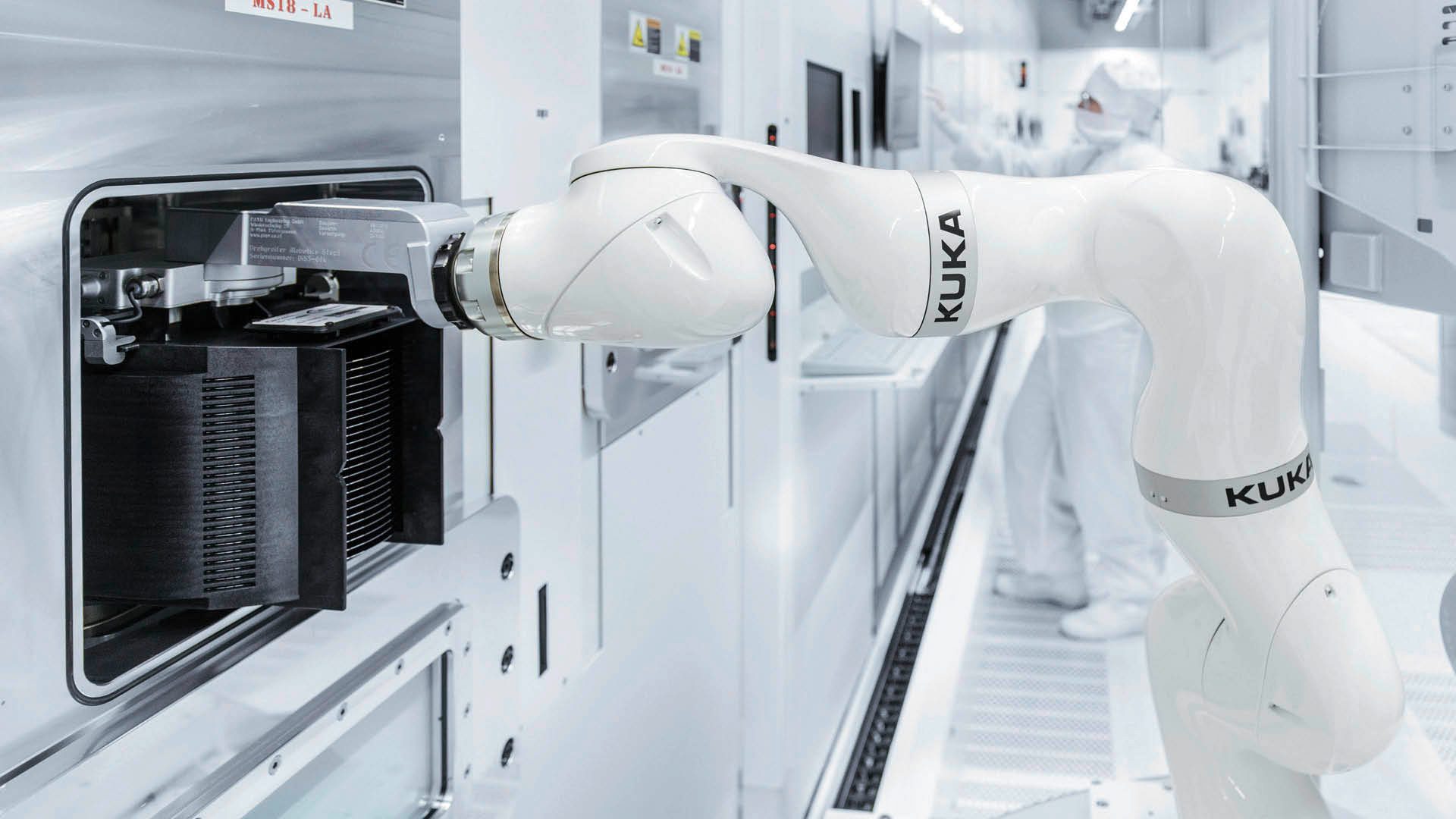Management
6 Key Considerations for Applying
Collaborative Robots
The extent of collaboration helps determine the need for a cobot. By Corey Ryan
Manufacturers often look at collaborative robots, or cobots, as an ideal way to enhance production efficiency, with human workers and automation working closely together. Not all applications call for a cobot as an automation solution, however. Six key considerations help you determine whether a cobot or an industrial robot with collaborative capabilities and safety add-ons best achieves your production goals.
Presence of humans within the robotic workspace
Collaborative robots enable human workers and robots to inhabit the same workspace safely, but degrees of collaboration vary. In some applications, workers and robots may interact closely and continuously. In other situations, humans may enter an automated workspace only intermittently to load a parts bin or perform an inspection. The extent of collaboration helps determine the need for a cobot.
Production line speed and task hazards
A fully collaborative robot moves at about 250 mm/second with a constant human presence, roughly 10% of the speed of a regular industrial robot. Unless humans and robots work closely 20% or more of the time, a fully collaborative robot can’t optimize production time. Fitted with technology that senses a human presence and halts the action, an industrial robot can run at full speed until humans enter the workspace.
Some robots perform hazardous tasks or use end-of-arm tooling outfitted with equipment that could endanger humans, such as rotating blades or cutting torches. In these applications, protective fencing surrounds the workspace, negating the need for cobots.
Most processes earmarked for automation are manual tasks performed by humans. The key question to ask is how to transfer what these employees do into an automation solution. To determine the answer, facilities must identify all the manual step-by-step actions/decisions performed to accomplish a task, then determine how automation will accomplish each of them. To illustrate, humans easily identify an item that needs to be moved, but a robot must be taught to do so, perhaps with barcodes affixed onto materials or parts.
When preparing the list of actions that make up a task, the key is to not overlook the obvious. Such a list will also help establish how much intelligence the automation requires and which safety factors enter the picture, along with how to handle priorities and levels of interaction with humans, equipment and software.

Payload and reach
Payloads typically top out at or below 20 kg for cobots, which use shorter arms with less mass and momentum for greater safety around human workers. When a production line works with large or heavy parts, or requires a robot with a reach of about 1.5 meters or longer, industrial robots work more efficiently than cobots. Heavy payloads and long reaches require more safety provisions and do not suit a cobot’s capabilities.
Floor space and traffic flow
Used appropriately, collaborative robots can offer many benefits. Without safety fencing, for example, manufacturers can free up floor space. That reclaimed area can handle other production operations, provide storage space, or clear pathways for foot traffic, forklifts or other equipment.
When integrating collaborative robots on mobile automation, a facility’s environment, its floor conditions and foot/other vehicle traffic are all paramount considerations. For example, some robots must travel both indoors and outdoors and endure extreme temperatures, along with high humidity and other environmental challenges. In these cases, it’s essential to determine if and how the automation can handle those conditions, and whether that automation can navigate smoothly over gaps, slopes, bumps or unevenness in a facility’s floor.
In addition to floor conditions, traffic – either on foot or from other vehicles – can hinder a robot as it navigates around a facility. Likewise, the width of aisles and intersections, separation of different paths, stability and availability of physical environment features will also factor into the navigation equation.
Based on the outcomes of an evaluation of driving conditions, does the mobile robot need a separate path? Are physical facility features in place that the robot’s navigation system will reference to guide it? For instance, in a long, wide empty hall, a laser scanning navigation system would need some added relays/physical features, such as posts.

Risk assessment
The delicate balance between speed and collaboration may call for fencing around any robot, cobot or not. To achieve the right level of collaboration and maximize the value of your automation investment, robot installations call for knowledgeable, comprehensive pre-installation risk assessments and programming. Partner with an experienced robotic technology OEM or integrator who can visit your facility to evaluate your application and identify areas of risk.
Automation safety requires consideration of several application risk factors. These will influence the level and type of safety procedures and systems needed. It goes without saying that any robot interaction with humans makes safety the highest of priorities.
Facilities also need to determine the frequency of those interactions. Is human/robot interaction necessary, will it occur occasionally or never at all? These key questions must have answers to decide whether an application requires additional safety besides the inherent safety of the robot, such as complete safety fencing or other protective system.
Like interactions with humans, robot interactions with other equipment will also raise safety concerns, especially when robots dock or load/unload. Facilities must take measures to ensure robots don’t crash into machines, other equipment or humans. Imagine the consequences of a human reaching between a moving conveyor and a stationary one during a part transfer.

Employee environment and job satisfaction
Rather than replace human workers, most robotic automation frees them from strenuous, repetitive, “dull, dirty or dangerous” jobs, many of which require repeatable accuracy. Robots can upgrade work environments, enhance worker attentiveness, reduce injuries and improve work environments to help make jobs more rewarding and increase employee retention rates. Freed from menial jobs, employees can develop new, higher-paying skills that also benefit their employer. That’s a win-win for employees and employers, as robots improve job satisfaction and production efficiency at the same time.
